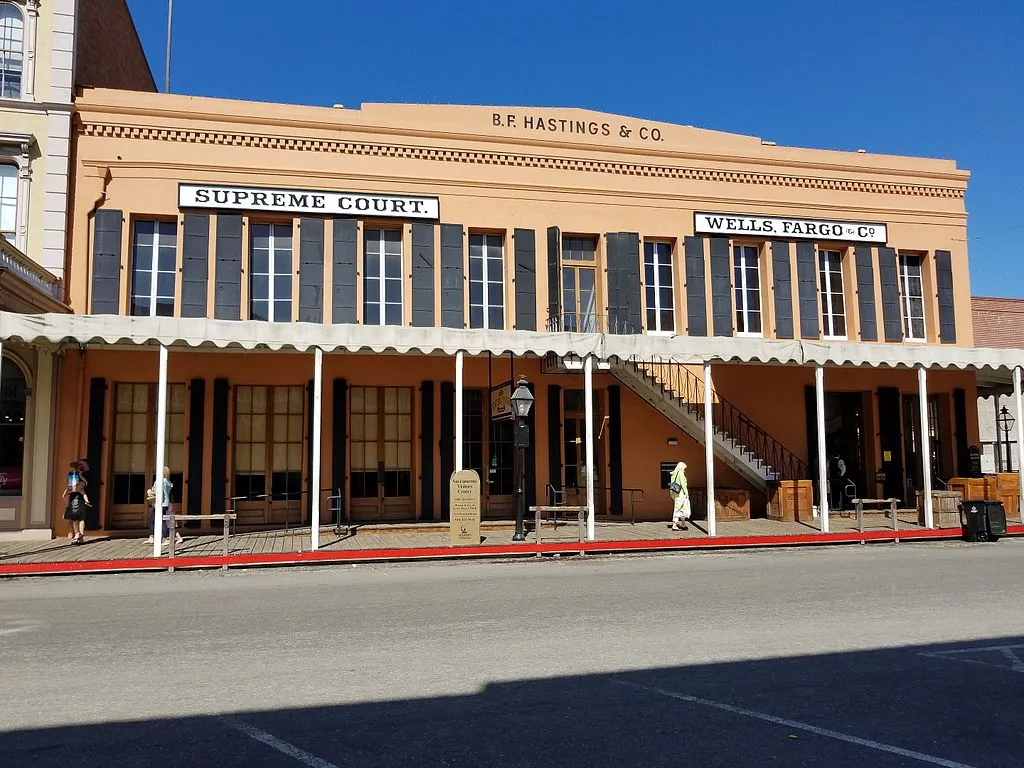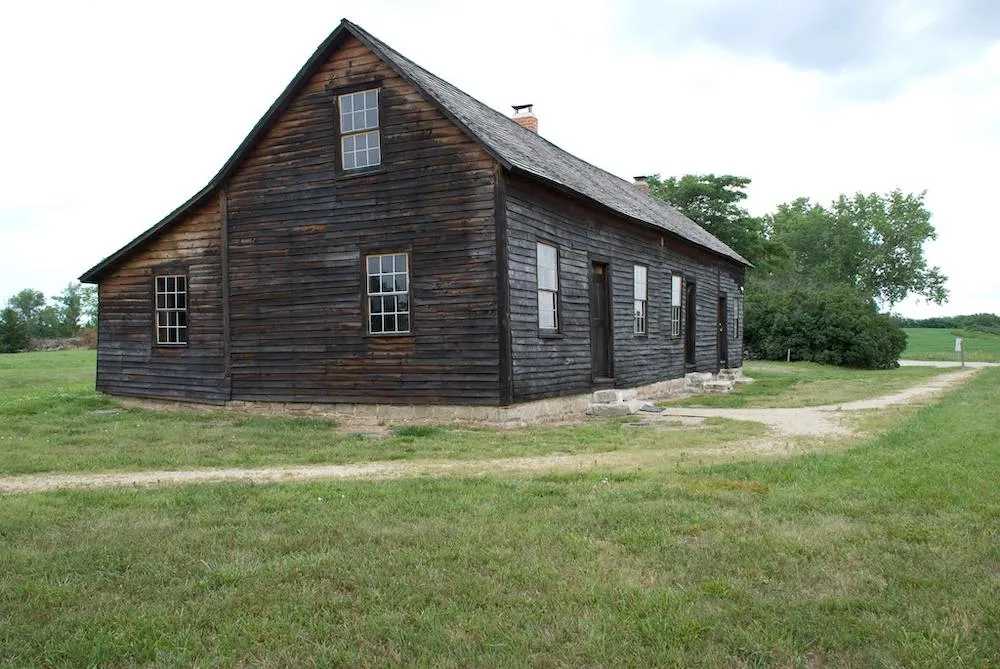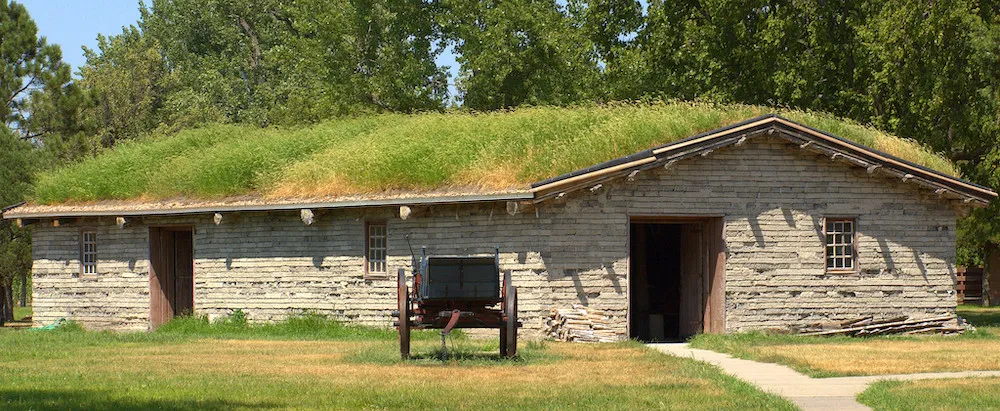Six Stops on the Pony Express That You Can Still Visit
Established 160 years ago, the short-lived route was once the quickest way to deliver mail across the United States
/https://tf-cmsv2-smithsonianmag-media.s3.amazonaws.com/filer/8d/f5/8df54f34-5946-4078-80b1-4644f063fd65/lead_image.jpg)
For an 18-month span from 1860 to 1861, one of the quickest and most reliable ways to send mail across the United States was via the Pony Express. With a roughly 2,000-mile route stretching from Sacramento, California, to Saint Joseph, Missouri, the mail service employed relays of riders who would make the ten-day journey, rain or shine, on horseback through the Rocky Mountains and across the Great Plains, all in the name of delivering the mail.
Before the founding of the Pony Express on April 3, 1861, it wasn’t uncommon for pieces of mail to take weeks or even months to travel across the country. However, the new delivery service, which was operated by the Central Overland California and Pikes Peak Express Company, a stagecoach line, cut delivery times significantly, making it particularly appealing to newspaper publishers as a means to spread the news like wildfire. Riders would carry the mail in a mochila (a leather knapsack) before passing it along to the next rider at one of the 190 designated stations along the route. On average, a rider would travel for up to 100 miles at a time, changing horses they were riding at full gallop every 10 to 15 minutes.
“For the service to work, information had to get there faster than regular mail,” says Lynn Heidelbaugh, a curator for the Smithsonian's National Postal Museum. “Weight was an issue, and it was important to keep it down so it would be less of a burden on the horses. That’s why the mail itself was on slips of paper that were tissue thin and printed with indelible ink, so it wouldn’t bleed if it got wet. People would use shorthand and codes, the bare minimum to keep news reports moving. Otherwise, the sender would incur more expenses by weight.”
Costing $5/per ounce (equivalent to roughly $164 today after inflation), the high price tag explains why the Pony Express service was predominately used by businesses and newspapers that could afford the hefty sum. The fastest delivery was five days, and the letter contained an announcement that Abraham Lincoln won the presidency.
The steady gig was popular amongst cowboys, such as William “Buffalo Bill” Cody, who supposedly rode his first stint at 14 years of age. Unfortunately, the service quickly proved to be unsustainable, remaining in the red throughout its short run. On October 26, 1861, just two days after the debut of the transcontinental telegraph system, the Pony Express was shuttered for good.

Despite being short-lived, the Pony Express has been memorialized in numerous ways, from being celebrated on postage stamps to being the subject of popular movies, including the 1953 western Pony Express starring Charlton Heston. Museums across the country have artifacts from the service’s heyday in their holdings, including the National Postal Museum, which has an original stamped envelope and a replica mochila. Even 160 years later, the National Park Service operates the Pony Express National Historic Trail, which offers an interactive map with details on former stations and other important sites. And the National Pony Express Association holds an annual re-ride each summer, where teams of riders replicate the route and deliver real mail.
“I love commemorating this piece of history,” says Patrick Hearty, who has been participating in the re-ride for decades with his family. “There’s something about the romance of the Pony Express that draws people in.”
To experience the Pony Express for yourself, here are a half-dozen sites to visit along the Pony Express National Historic Trail.
B. F. Hastings Bank Building, Sacramento, California

As the capital of California, Sacramento served as the westernmost terminus of the Pony Express. It was there in the city’s bustling downtown that riders would mount their horses before starting their journey eastward. One site of particular importance is the B. F. Hastings Building, a two-story brick structure built in 1853 that housed the offices of Wells Fargo & Company, one of the delivery service's contractors. Located at the corner of J and Second streets, the historical landmark is only a few blocks from the Sacramento River, where mail would arrive via ferry from San Francisco before being distributed by horseback.
Pony Express National Museum, Saint Joseph, Missouri

One of the most important sites along the route was in Saint Joseph, Missouri, the trail's eastern endpoint. It was there that riders and horses would rest before embarking on their next delivery, the latter of which would stay at the Pony Express Stable (formerly known as Pike’s Peak Stable). While the stable’s original wooden structure no longer exists, the replacement brick building from 1888 still stands and is recognized on the National Register of Historic Places. The stables are also part of the Pony Express National Museum, with its collection of artifacts, including historic photos, maps, saddles, harnesses and blacksmith tools as well as a replica of a relay station where riders would quickly change steeds before venturing on.
Hollenberg Pony Express Station, Hanover, Kansas

Many of the Pony Express stations no longer exist—or if they do, they’re in ruins. The Hollenberg Pony Express Station in Hanover, Kansas, however, is one of the last standing. This one-story wood structure dates back to 1857, and before becoming a station point along the route (as well as a stop along the Oregon and California migrant trails), it served as a grocery store, tavern and unofficial post office. The building now houses a museum outfitted with period furnishings, articles of clothing similar to what travelers would’ve worn more than a century ago and interpretive exhibitions about the Pony Express. The site sits 15 miles west of the Pony Express Barn and Museum in Marysville, Kansas, consisting of an original barn from 1859 and seven period rooms that show the resting quarters where riders would have stayed. There's also a telegraph room, which hinted at the inevitable demise of the Pony Express.
Fort Kearney State Historical Park, Kearney, Nebraska

As an influx of settlers traveled west in search of new beginnings, the U.S. Army began building forts in the mid-1840s along the routes as safe stopping points for weary travelers to rest. In 1860, Fort Kearney became a Pony Express station. While none of the original adobe buildings have survived, the Nebraska Game and Parks Commission has rebuilt two structures to give visitors a glimpse of what the area may have looked like. Another site located ten miles to the north along Interstate 80 in south-central Nebraska is the The Archway, an impressive building at exit 275 that straddles the highway and houses an extensive collection of artifacts retelling 170 years of overland migration. One highlight includes a video reenactment of riders switching horses at a station.
Fort Laramie National Historical Site, Fort Laramie, Wyoming

One of the most well-traveled passages taken by pioneers was through Fort Laramie National Historic Site, a former fur trading fort established in 1834. It’s estimated that some 50,000 people traveled through the area prior to 1952. By the time the first Pony Express riders barreled by on horseback, it had become a well-known rest stop for wagon trains and served as a safe haven patrolled by U.S. troops on what was Native American land. Many of the fort’s original buildings still remain, and ongoing restorations have brought some of the most derelict structures back to their former beauty, including Officer’s Row, where military officers resided, and the Post Trader’s Store, where travelers would stock up on supplies.
Pony Express Statue, Salt Lake City, Utah
/https://tf-cmsv2-smithsonianmag-media.s3.amazonaws.com/filer_public/ee/f0/eef0ac81-93a6-44a5-a68a-a89db1b8afbe/gettyimages-144854255.jpg)
Following the Mormon Trail from Fort Bridger, Wyoming, riders would travel west through treacherous mountain passes to Salt Lake City before heading to Carson City, Nevada. To commemorate Utah’s leg of the Pony Express, the late sculptor Avard Fairbanks created a monument featuring two riders on horseback in the midst of a mochila exchange. The sculpture, which is located five miles east of downtown at This Is the Place Heritage Park, serves as a lasting reminder of the men who traveled cross country to deliver the mail. The site sits 50 miles north of what is now Camp Floyd State Park Museum, a former U.S. military garrison in Fairfield, Utah, that was a common stopping point for travelers, including Pony Express riders, who would often overnight at the (still standing) two-story wooden Stagecoach Inn, which is now on the National Register of Historic Places.
Planning Your Next Trip?
Explore great travel deals
Smithsonian magazine participates in affiliate link advertising programs. If you purchase an item through these links, we receive a commission.